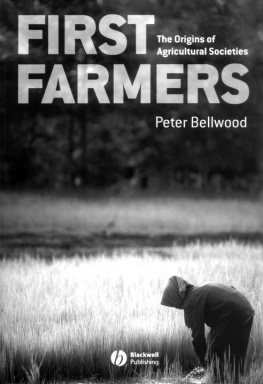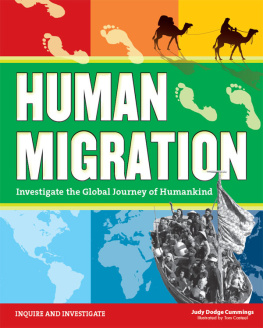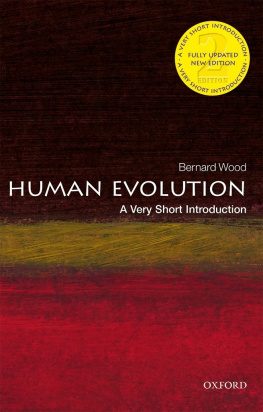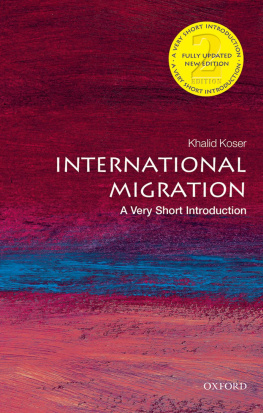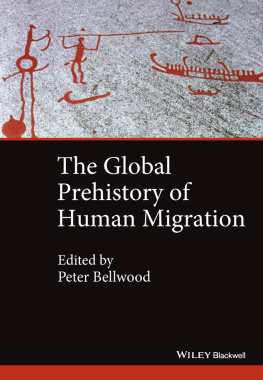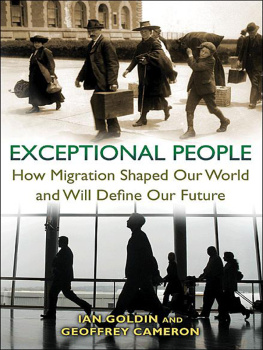Contents
For my father, Edwin Arthur Bellwood (19051959), and also for the
Pink family, in memory of Jerome (19852012).

This edition first published 2013
Peter Bellwood
Blackwell Publishing was acquired by John Wiley & Sons in February 2007. Blackwells publishing program has been merged with Wileys global Scientific, Technical, and Medical business to form Wiley-Blackwell.
Registered Office
John Wiley & Sons Ltd, The Atrium, Southern Gate, Chichester, West Sussex, PO19 8SQ, UK
Editorial Offices
350 Main Street, Malden, MA 02148-5020, USA
9600 Garsington Road, Oxford, OX4 2DQ, UK
The Atrium, Southern Gate, Chichester, West Sussex, PO19 8SQ, UK
For details of our global editorial offices, for customer services, and for information about how to apply for permission to reuse the copyright material in this book please see our website at www.wiley.com/wiley-blackwell .
The right of Peter Bellwood to be identified as the author of this work has been asserted in accordance with the UK Copyright, Designs and Patents Act 1988.
All rights reserved. No part of this publication may be reproduced, stored in a retrieval system, or transmitted, in any form or by any means, electronic, mechanical, photocopying, recording or otherwise, except as permitted by the UK Copyright, Designs and Patents Act 1988, without the prior permission of the publisher.
Wiley also publishes its books in a variety of electronic formats. Some content that appears in print may not be available in electronic books.
Designations used by companies to distinguish their products are often claimed as trademarks. All brand names and product names used in this book are trade names, service marks, trademarks or registered trademarks of their respective owners. The publisher is not associated with any product or vendor mentioned in this book.
Limit of Liability/Disclaimer of Warranty: While the publisher and author(s) have used their best efforts in preparing this book, they make no representations or warranties with respect to the accuracy or completeness of the contents of this book and specifically disclaim any implied warranties of merchantability or fitness for a particular purpose. It is sold on the understanding that the publisher is not engaged in rendering professional services and neither the publisher nor the author shall be liable for damages arising herefrom. If professional advice or other expert assistance is required, the services of a competent professional should be sought.
Library of Congress Cataloging-in-Publication Data applied for
Bellwood, Peter S.
First migrants: ancient migration in global perspective/Peter Bellwood.
p. cm.
Includes index.
ISBN 978-1-4051-8909-5 (hardback) ISBN 978-1-4051-8908-8 (paper) 1. Human beings
Migrations. 2. Prehistoric peoples. 3. Migrations of nations. 4. Archaeology and history. I. Title.
GN370.B45 2013
930.1dc23
2013016299
A catalogue record for this book is available from the British Library.
Cover image: Hokule'a, replica of traditional Polynesian voyaging canoe, Kaneohe Bay, Oahu, Hawaii
Stock Connection / SuperStock.
Cover design by Nicki Averill Design & Illustration.
List of Figures
| Major language family distributions across the Old World at AD 1500. Some small families and isolates are omitted, for instance, Hmong-Mien and Basque. The Altaic family contains Japonic, Korean, Ainu, Mongolic, Turkic, and Tungusic (see ). Original drawn by Clive Hilliker as Bellwood 2005a, Figure 1.1, using data from Ruhlen 1987. |
| Major language families of the New World at AD 1500. Many small families and isolates are omitted, and the large areas marked as unrecorded, unaffiliated reflect in part the widespread native language loss since European settlement began. Original drawn by Clive Hilliker as Bellwood 2005a, Figure 1.2, using data from Ruhlen 1987. |
| A current family tree for hominins, from Australopithecine ancestors to Homo sapiens. |
| Oxygen isotope records reflecting global temperatures at increasing resolutions for the last 5.3 million years (left), the Pleistocene and Holocene (from 2.58 million years ago; center), and the Upper Pleistocene and Holocene (from 130,000 years ago; right). Higher temperatures are to the right, lower to the left. Interglacials are identified by uneven numbered marine isotope stages (MIS the Holocene is 1), glacials by even numbers. This figure is from Hertler et al. 2013, and contains original data from Lisiecki and Raymo 2005. Reproduced courtesy of the authors. |
| Early hominin (pre-Neanderthal and pre-sapiens) fossil find places and archaeological sites in the Old World. Background map by Multimedia Services, ANU, details added by the author. |
Major Paleolithic stone tool forms considered by archaeologists to be diagnostic in discussions about human evolution.
(a, b) Oldowan basalt pebble core and large flake (ventral view) from Koobi Fora, Lake Turkana, Tanzania;
(c) Acheulian flint bifacial hand axe from Britain; (d) a quartzite example (with opposite orientation) from West Bengal, India;
(e, f) Mousterian retouched flake scraper and point, Combe Grenal cave (Dordogne), France;
(g) Levalloisian tortoise (prepared) flint core with a detached flake (modern copy white arrows show direction of strike);
(h, i) prismatic blade core and long blade of flint (Upper Paleolithic, France).
All from the collections of the School of Archaeology and Anthropology at ANU, photos by the author. |
| Old World localities associated with biological and cultural remains of Neanderthals and early H. sapiens. Kya = thousands of years ago. Background map by Multimedia Services, ANU, details added by the author. |
| The colonization of the Americas. Extents of ice cover are only approximate, but the huge extent of the North American glaciers is evident. Background map by Multimedia Services, ANU, details added by the author. |
| Suggested early migrations of the speakers of Uralic languages, after Blaek 2013b with minor modifications, reprinted courtesy of the author. Map production by Multimedia Services, ANU. |
| The distributions of Na-Dene languages and White River volcanic ash. Reproduced with minor modifications from Matson and Magne 2013, courtesy of the authors. Original map by S. Matson. |
| The distributions of Paleoeskimo archaeological complexes (circa 2000 BC), superimposed by the linguistic migrations of Eskimo-Aleut populations, especially the major Thule Inuit migration after AD 1200. Background map by Multimedia Services, ANU, with original data added by the author from maps in Fortescue 2013; Friesen 2013. |
| Pre-pastoral human occupation in the Green Sahara during the mid-Holocene. Background map by Multimedia Services, ANU, details added by the author. |
| Backed artifacts and geometric microliths from Australia and the southwestern arm of Sulawesi. Top row: two backed blade-like tools and four microliths (geometric and crescentic in shape) of chert from Leang Burung shelter 1, South Sulawesi, excavated by Mulvaney and Soejono 1970. Bottom row: matching tools of chert and silcrete from southern Australia (including the two backed blade-like tools marked Lake Illawarra), from collections of the National Museum of Australia on loan to the School of Archaeology and Anthropology at ANU. Photos by the author. |
| Australia, showing the almost identical distributions of Pama-Nyungan languages with backed artifacts, and Non-Pama-Nyungan languages with bifacial points. The northern Cape York Peninsula and New Guinea lack both artifact categories. Also shown is a possible sea route linking Sulawesi and Australia, utilizing historical parallels for Makassan |
Next page

